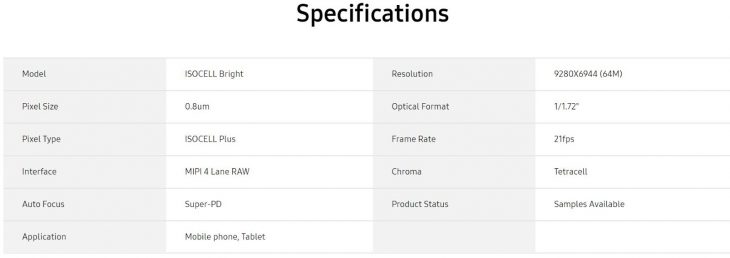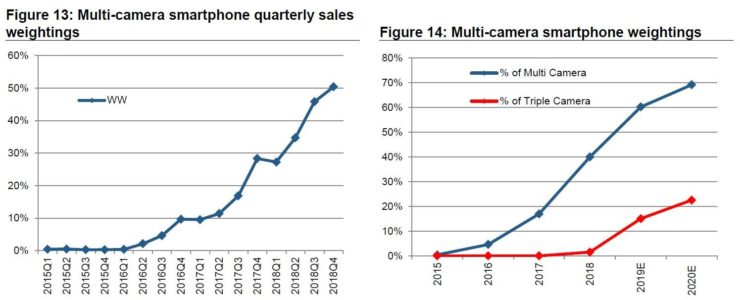Industry News: Samsung Announces 64MP Smartphons Sensor With 21fps
The industry is scared by the increasing popularity of smartphones, and for a good reason. The technology evolves at a fast pace.
Now Samsung announced a new, 64MP sensor for smartphones doing 21fps. You can already get smartphones with sensors around 40MP (as the excellent Huawei P30 Pro, which seems to be gold standard for smartphone photography for the time being), and it seems the next generation of smartphones might raise the resolution to 64MP. As crazy as it sounds (at least to me) this is the future, along with computational photography algorithms getting always better. Why should people buy a dedicated camera when
Samsung press release:
Samsung Electronics, a world leader in advanced semiconductor technology, today introduced two new 0.8-micrometer (μm) pixel image sensors – the 64-megapixel (Mp) Samsung ISOCELL Bright GW1 and 48Mp ISOCELL Bright GM2. With the addition, Samsung expands its 0.8μm image sensor lineup, the smallest pixel size currently available in the market, from existing 20Mp to ultra-high 64Mp resolutions.
“Over the past few years, mobile phone cameras have become the main instrument for recording and sharing our everyday moments,” said Yongin Park, executive vice president of sensor business at Samsung Electronics. “With more pixels and advanced pixel technologies, Samsung ISOCELL Bright GW1 and GM2 will bring a new level of photography to today’s sleekest mobile devices that will enhance and help change the way we record our daily lives.”


[via Image Sensors World]ISOCELL Bright GW1 is a 64Mp image sensor that features the highest resolution in Samsung’s 0.8μm-pixel image sensor lineup. With pixel-merging Tetracell technology** and remosaic algorithm***, GW1 can produce bright 16Mp images in low-light environments and highly-detailed 64Mp shots in brighter settings. To take pictures resembling the way the human eye perceives its surroundings in a mixed light environment, GW1 supports real-time high dynamic range (HDR) of up to 100-decibels (dB) that provides richer hues. In comparison, the dynamic range of a conventional image sensor is at around 60dB, while that of the human eye is typically considered to be around 120dB.
GW1 is equipped with a Dual Conversion Gain (DCG) that converts the received light into an electric signal according to the illumination of the environment. This allows the sensor to optimize its full well capacity (FWC), utilizing the collected light more efficiently especially in bright environments. Sharper results can be delivered through Super PD, a high-performance phase detection auto-focus technology, and full HD recording at 480 frames-per-second (fps) is supported for smooth cinematic slow motion videos.
ISOCELL Bright GM2 is a 48Mp image sensor that also adopts Tetracell technology in low-light environments and a remosaic algorithm in well-lit settings, bringing highly-detailed pictures with natural and vivid colors. GM2, like GW1, adopts DCG as well for added performance and Super PD for fast autofocus.
Samsung ISOCELL Bright GW1 and GM2 are currently sampling and are expected to be in mass production in the second half of this year.



